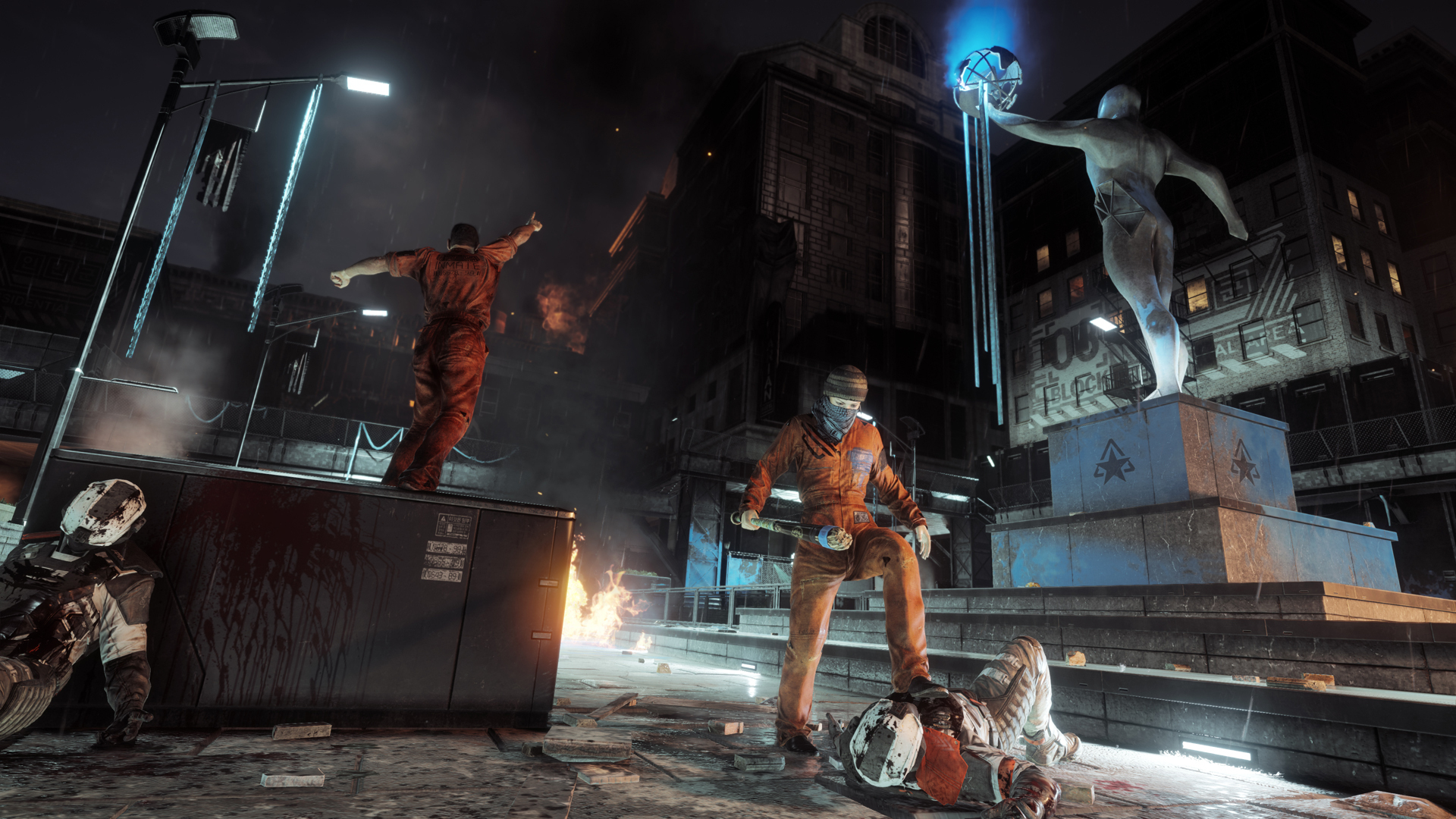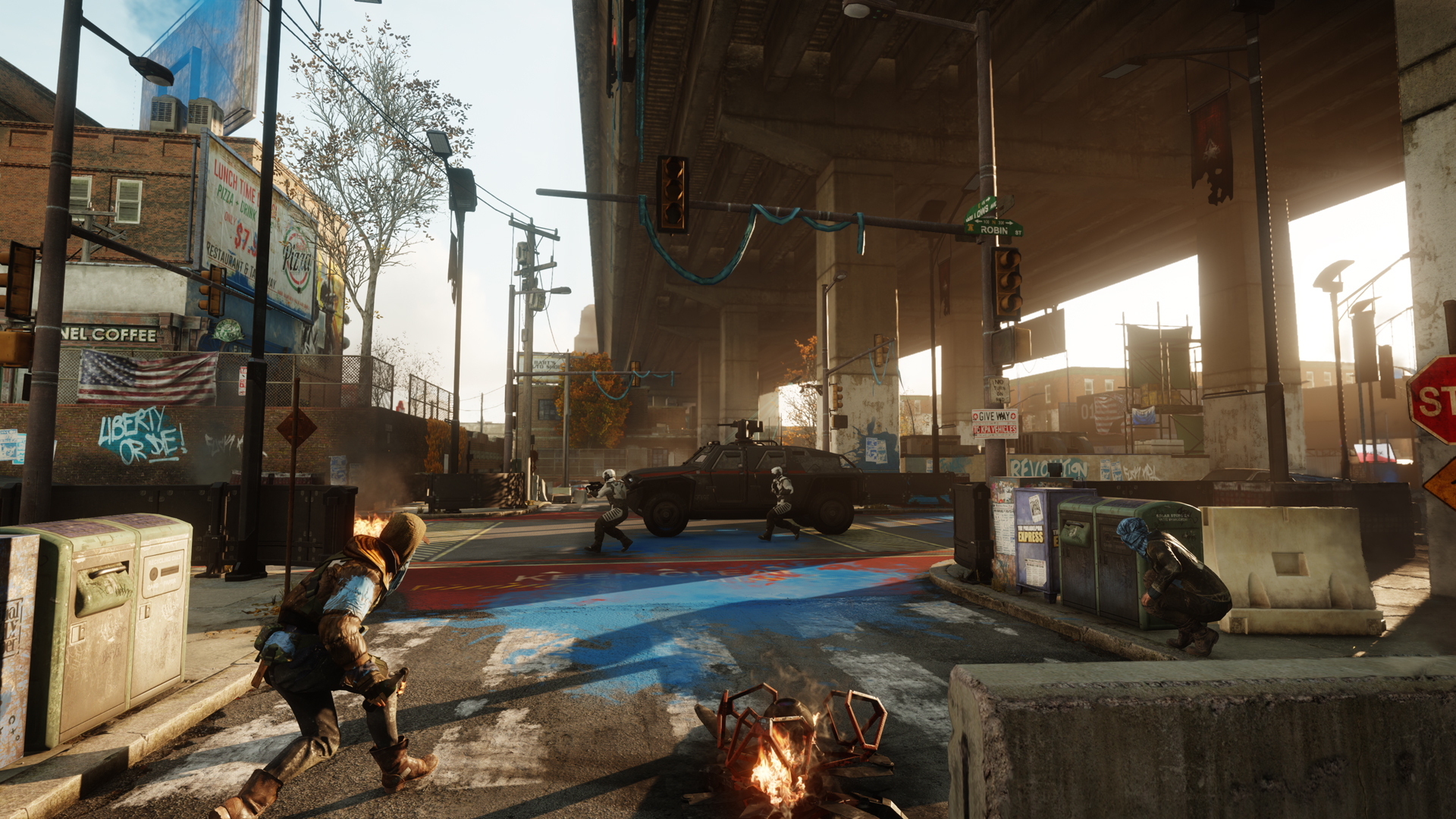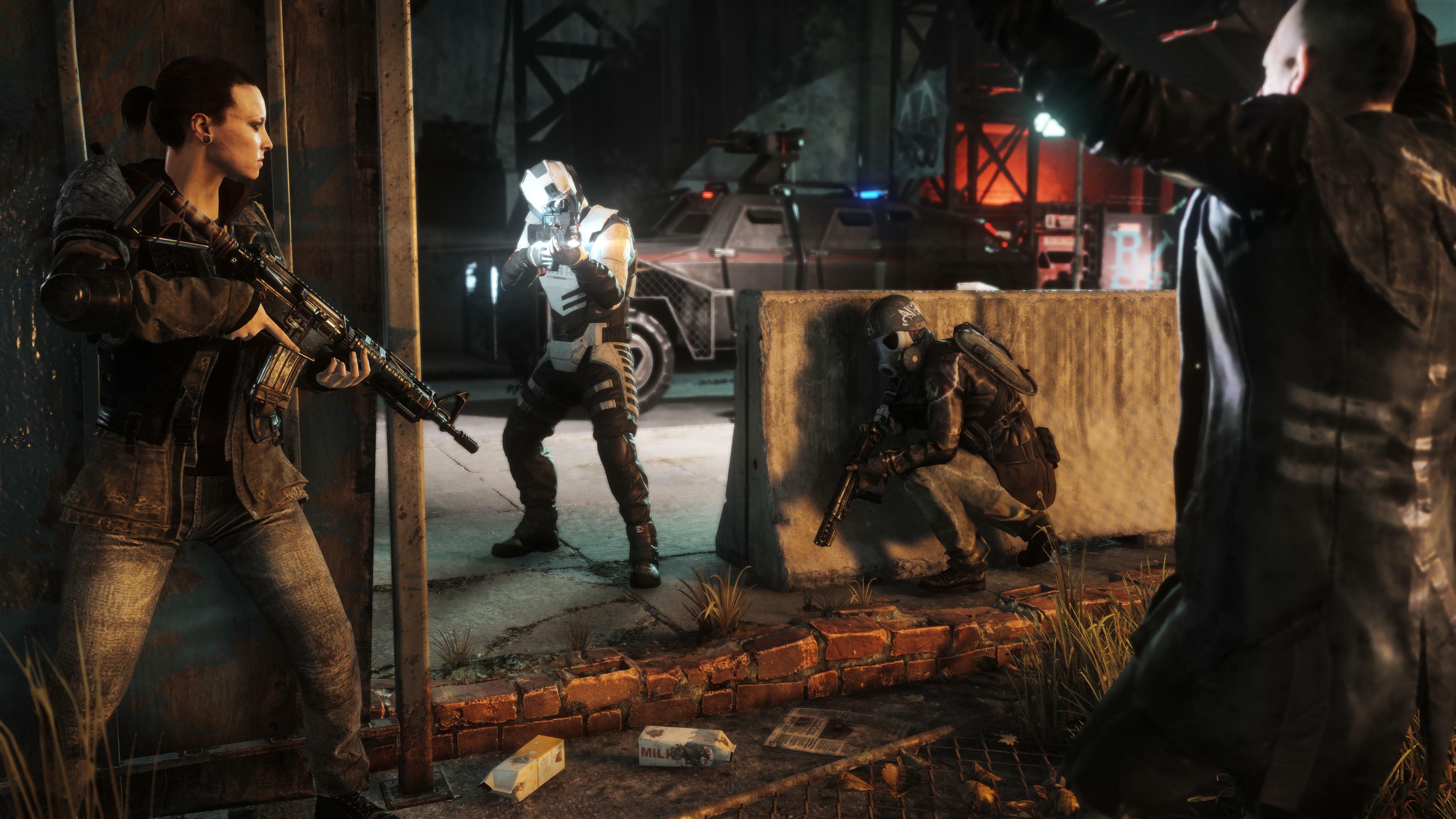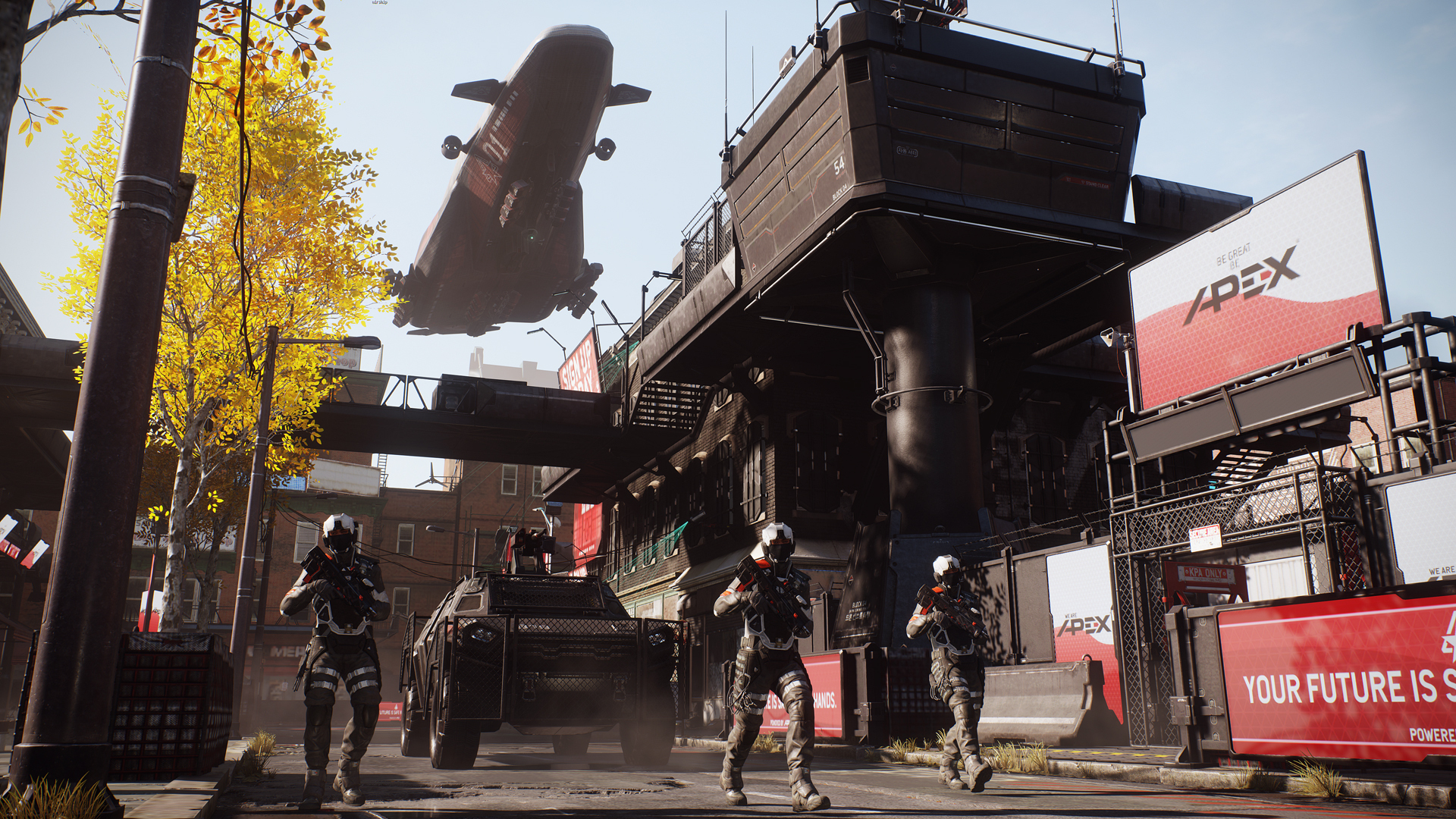Homefront: The Revolution review
What's worse; fighting an enemy occupation or fighting a technical mess?

The original Homefront was a decent game. I’m aware that lots of people maintain to this day that it’s an unholy catastrophe of an FPS, but here’s the thing: I’m right and they’re wrong.
That puts me in a slightly awkward position with this sequel, because I really don’t like it. I don’t think I’m going to be an outlier this time, though – the flaws are just a bit too glaring to ignore.
An invasion of Norks
But before we get to that, let’s have a quick run through the setting, which has practically nothing in common with the first Homefront game. See, Homefront: The Revolution exists in an alternate timeline in which North Korea has been the world’s technological pioneer since the ‘70s, going so far as to end up supplying the US with weapons and military vehicles for use in its “wars in the Middle East”.
Thing is, those sneaky North Koreans built a killswitch into every piece of hardware it made, and when the Americans, crippled by militarily incurred debt, miss one too many payments, said switch is pressed. Cue useless guns, sinking subs and falling planes, allowing the North Korean army to invade the States en masse. It’s rather like a bailiff drugging your dog before entering your house to take all of your stuff. If the bailiff had given you the dog in the first place.
Four years into the occupation and everyone’s pretty fed up with their Nork overlords (yep, ‘Nork’ really is the slang used to refer to the North Koreans in Homefront). So fed up, in fact, that many Americans have armed themselves and formed a resistance force. You’re the newest member of the Philadelphia branch, and its talismanic leader has just been captured.
You might like › everything you need to know about Battlefield 1
Zonal marking

In Homefront: The Revolution, Philadelphia is split into zones that you travel between using a subway system, with a rather long load between each one. This makes this less of an open world than the likes of the Far Cry games or even The Division, and more of a world made up of a number of smaller open zones.
Each zone has a colour rating attached to it: green zones are those under most secure occupation from the KPA (Korean People’s Army), yellow zones are the slums that most native Philadelphians have ended up living in, and red zones are derelict, off-limits areas of the city.
This is perhaps one of Homefront’s best ideas, as each type of zone has to be tackled very differently. The red zones are really full-on war zones in which there’s essentially an endless battle going on between the resistance and the KPA. You’ll run (or ride a motorbike) all over the area with your weapon drawn, ready for a fight, and as well as completing the various story missions you’ll claim areas for the resistance by hacking transmitters or clearing out an enemy facility.
But yellow and green zones have far higher security, so in these areas you’ll spend most of your time wandering around with your weapon hidden, trying to avoid the various checkpoints and patrols. In the yellow zones you’ll still be attempting to reclaim areas for the resistance, but you have to be sneakier about it, and before you can get control of the zone you have to stir an uprising by filling a ‘heart and minds’ meter, which involves completing a load of smaller tasks such as freeing some prisoners or saving a civilian from a KPA soldier, taking down propaganda trucks and giving some money to beggars.
It’s a nice idea, but one that’s hampered, like so much in this game, by repetition and technical limitations.
Running to victory

One of Homefront’s biggest problems is the respawning and refreshing of enemies. In the first yellow zone you arrive in there’s a soldier guarding three prisoners. You wander up while the soldier’s back is turned, perform a takedown, prisoners are freed and your hearts and minds meter goes up a couple of percent. You move on a bit, but before long realise you need to double back, at which point you realise that those prisoners and that soldier have already respawned, despite the fact that you dealt with them probably less than a minute ago. This keeps happening, and it’s jarring. It makes so many of your actions feel like wasted time, even though you’ve been filling that meter.
This respawning issue is a problem elsewhere, too. Let’s say that rather than storm into an enemy base like a madman you decide to pick off the soldiers within from afar using your rifle. Seems like a sound tactical choice, right? You thin out the enemies and all seems pretty quiet, and then as you enter the base you find out that all of those enemies have returned, rendering your ‘sound tactical choice’ as completely irrelevant. And if you do decide to go in all guns blazing, you’ll just find yourself swamped with enemies that just keep on coming.
Perhaps this is intentional, to give you the sense that you’re just one man going up against an endless army, but in reality it’s just endlessly frustrating and, combined with a stealth system that’s too poorly fleshed out to be a real option in most situations, you’re often left with just one solution: run as fast as you can towards the objective and hope you make it there before you’ve been shot too many times. Once you get to it you’ll get a little cutscene and will have taken over the area, so all of those soldiers who were shooting your headless chicken-like body will have magically disappeared. No, that doesn’t feel like much of an achievement.
Bugging out

Homefront’s problems don’t end there, either; not by a long shot. This game does not run well. At all.
Frame rates are all over the place (I’m playing on PS4). Sometimes it’ll seem perfectly smooth, but then suddenly, and often with no discernible reason, movement will become a juddering mess.
And then there are the full-on lock-ups, which are so regular that if they formed the crux of a drinking game you’d be on the floor within the first hour. Each lasts probably two to three seconds, and they come at a variety of times. Every time you close the shop menu, for example, and every time a cutscene ends (seeing as many cutscenes are intended to flow into controllable action these are massively frustrating). Even more annoying are the unpredictable, seemingly random ones, like when you’re innocently walking or riding across a city. Worst of all, they crop during firefights all the time: I had three in one 20-second section of action.
On top of all that you’ve got NPCs constantly walking into walls and blocking you into corners. At one point I had to enter and leave a building three times because two bumbling idiots were completely blocking the hallway I needed to get down to progress my mission.
Seeing as I’ve been playing the game before release date there is a chance that some of these issues will be addressed by launch day, but given the extent of the problems and the fact that they’ve been noted in hands-on sessions going back months now, it seems unlikely that the game will be significantly improved in the next few days.
Homefront: The Revolution verdict

It’s a shame that Homefront: The Revolution is such a technical mess, because when it’s working it looks rather good. There’s lots of detail to the environments, and were it not for the weird behaviour of the NPCs this might feel genuinely like a city under occupation.
The weapons are great, too. The idea being that fingerprint technology makes KPA weapons unusable, so the resistance has to make do with older, less advanced weapons enhanced with homebrew modifications. Many of your guns will have wires running along them and bits sticking out, as well as random logos and bits of spray paint. You can modify your guns on the go, too, from switching scopes and muzzles to doing a complete refit. With a quick button press you can, for example, turn your standard rifle into a firework firing “Liberty Launcher”. And as well as looking great they sound and feel pretty spot-on too.
But for every great idea and nice touch there is, Homefront: The Revolution is just too riddled with issues to get a recommendation. There’s a good game here trying to get out, but it’s stuck behind lock-ups, frame-rate issues, dodgy respawning and poor AI, and in the end it’s just not fun to play.
You’ve got to applaud the ambition and desire to do something different, and it makes me want to like the game. But I don’t. And I’m almost certain you won’t either.
Buy Homefront: The Revolution here
You might also like › Uncharted 4: A Thief’s End
Stuff Says…
Some fresh ideas and lots of ambition, but technical issues and poor design choices leave Homefront: The Revolution a long way from being a good game
Good Stuff
Grading system for zones adds variation
Looks pretty great
Homebrew weapons and mods are a nice touch
Bad Stuff
Regular lock-ups and framerate issues
Enemy respawning is jarring and limits tactical options
Buggy NPCs
Very dislikable characters



